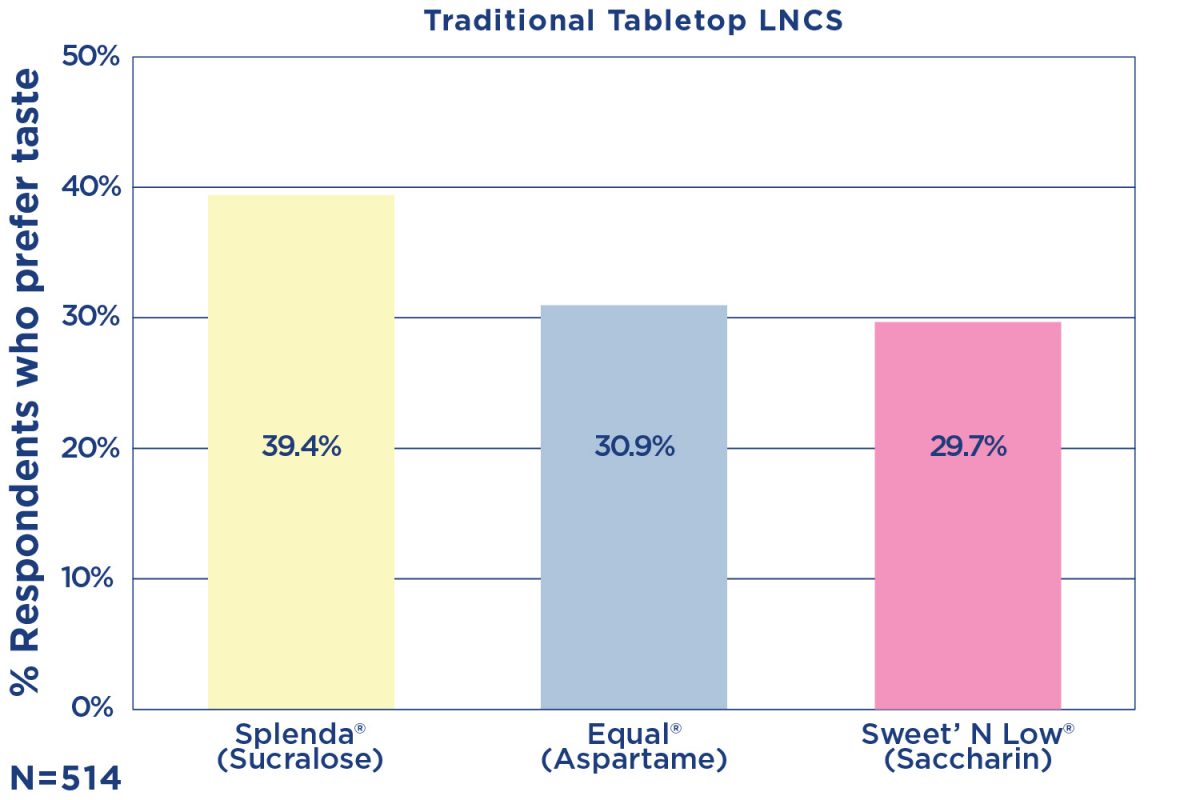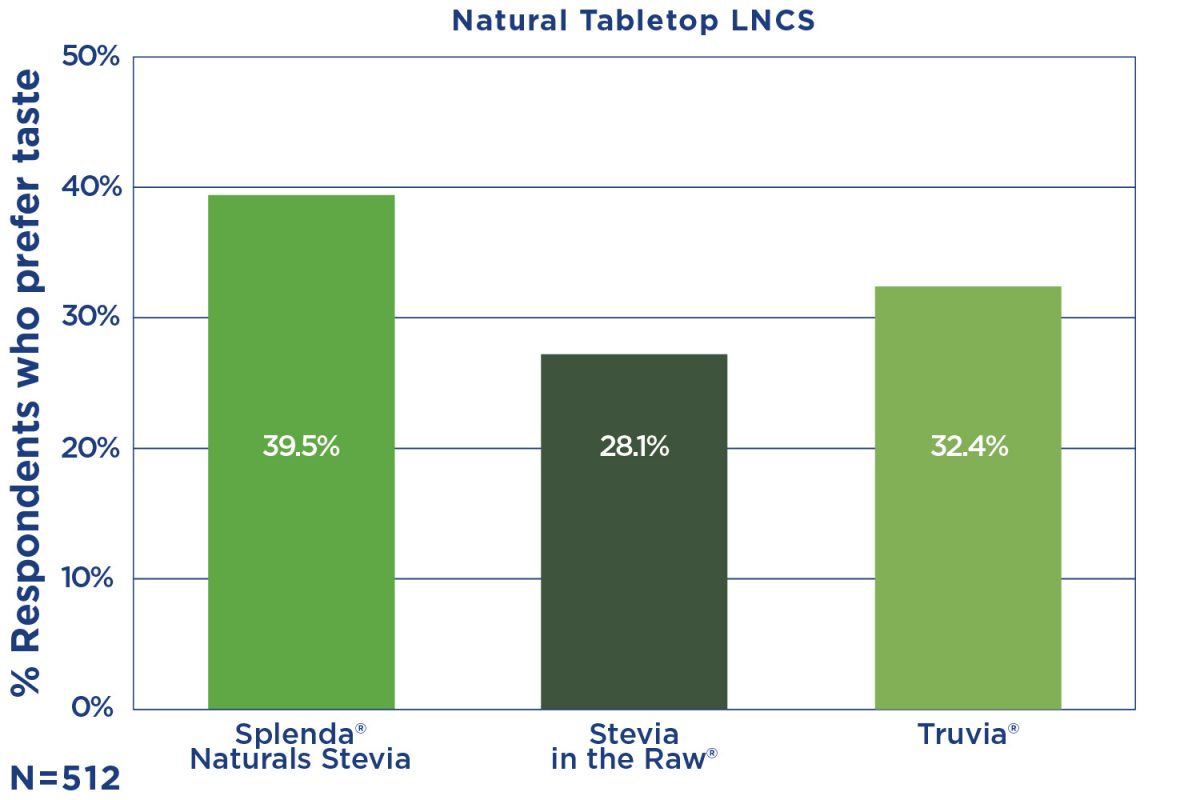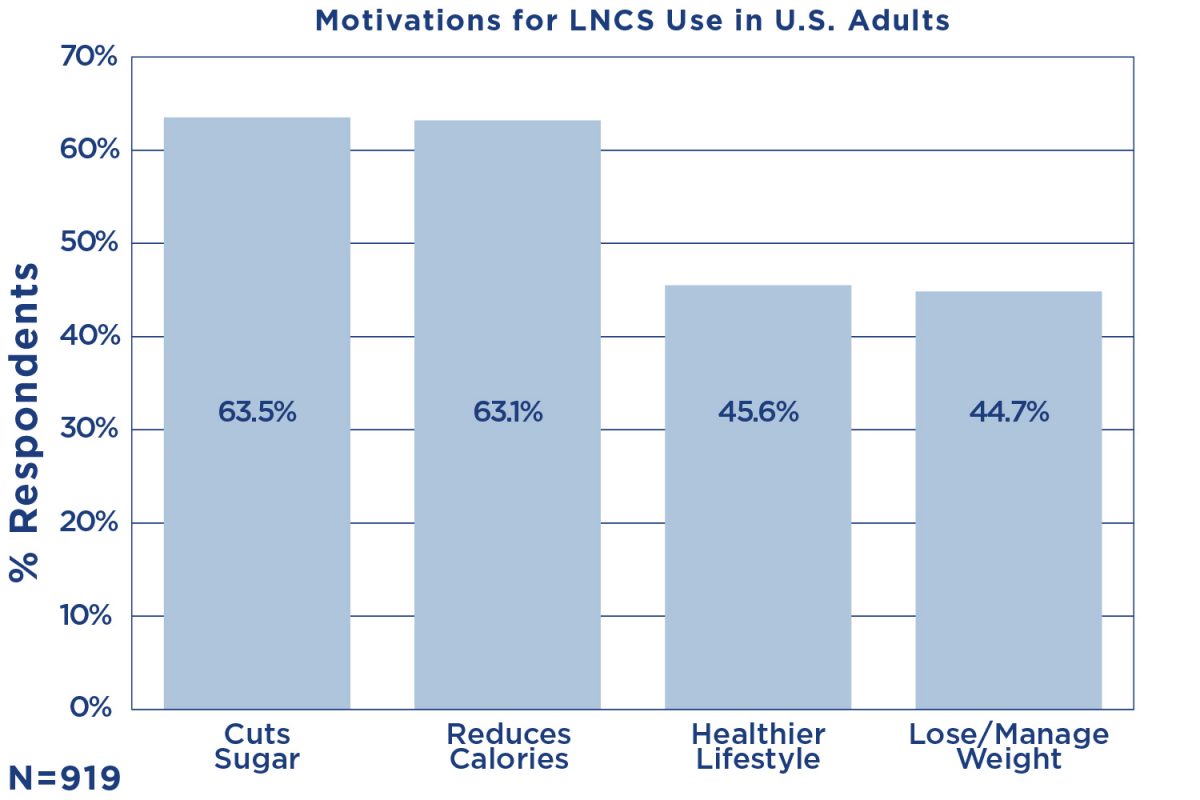In a 2020 survey (MarketLab, 2020), in 514 LNCS users asked to identify the brand of LNCS they use consistently.1 As presented below, survey respondents’ results showed a stronger preference for Splenda (sucralose) compared with the other traditional table-top sweeteners as evidenced by a higher percentage of respondents who report consistent use of the brand. Splenda Naturals Stevia was rated highest in the natural LNCS category.


As shown in the figure below, the most common reasons for LNCS use is to reduce the intake of added sugars and overall calorie consumption. Interestingly, more than half of respondents perceived LNCS use as a component of a healthier lifestyle and reported “reduces calories” as a main reason for using LNCS. We hypothesize that “reduces calories” is a motivation for weight loss and management. When counseling individuals, PCPs should leverage the motivators for leading a healthier lifestyle and losing/managing weight to emphasize that reducing added sugars in both ready-to-eat and home prepared foods and beverages, can help people achieve the associated health benefits.

These finding are important when counseling individuals because numerous studies have shown that the taste of food plays an important role in food choices, eating behaviors and food intake,2-5 and that the more distant a recommended change is from the person’s actual eating habits, the more difficult it is to gain sustained adherence to the recommended change.6 In a national survey of 2,967 U.S. adults, respondents were asked to rate the factors they felt were most influential in their food choices. On a 5-point Likert scale (1=least, 5=most), the mean score for importance of taste was 4.7, followed by cost (4.1), nutrition (3.9), convenience (3.8) and weight control (3.4).3 Investigators concluded that their results suggest that nutritional concerns, per se, are of less importance to most people than taste and cost. Therefore, product recommendations made by PCPs should focus on promoting healthy eating habits that are aligned with the consumer goals of being “tasty and inexpensive”.3
1. Heartland Foods. Data on file. 2. Kourouniotis S, Keast RSJ, Riddell LJ, Lacy K, Thorpe MG, Cicerale S. The importance of taste on dietary choice, behaviour and intake in a group of young adults. Appetite. 2016;103:1-7. 3 Glanz K, Basil M, Maibach E, Goldberg J, Snyder D. Why Americans eat what they do: taste, nutrition, cost, convenience, and weight control concerns as influences on food consumption. J Am Diet Assoc. 1998 Oct;98(10):1118-1126. 4. Ebrahim, Z, Villiers A, Ahmed T. Factors influencing adherence to dietary guidelines: A qualitative study on the experiences of patients with type 2 diabetes attending a clinic in Cape Town. JEMDSA 2014;19(2):76-84. 5. Neumark-Sztainer D, Story M, Perry C, Casey MA. Factors influencing food choices of adolescents: Findings from focus-group discussions with adolescents. J Am Diet Assoc 1999;99(8):929–937. 6. Jaworski M, Panczyk M, Cedro M, Kucharska A. Importance of Leveraging Patient Motivations for Using LNCSs. I Patient Prefer Adherence. 2018;12:163-174.